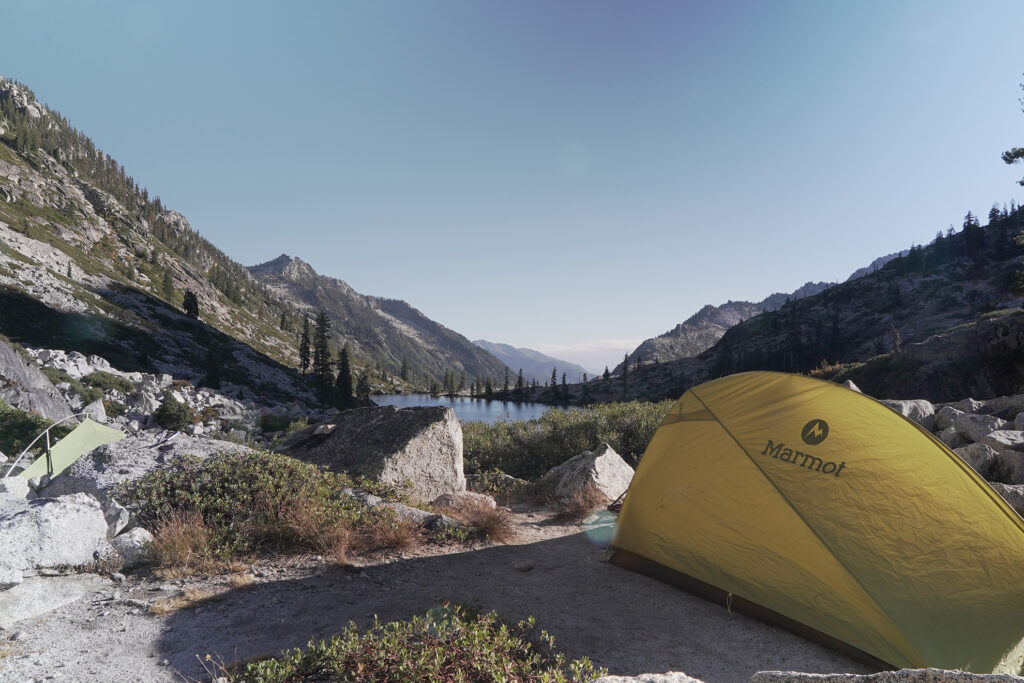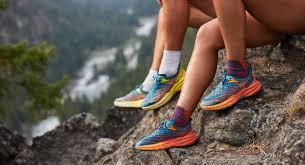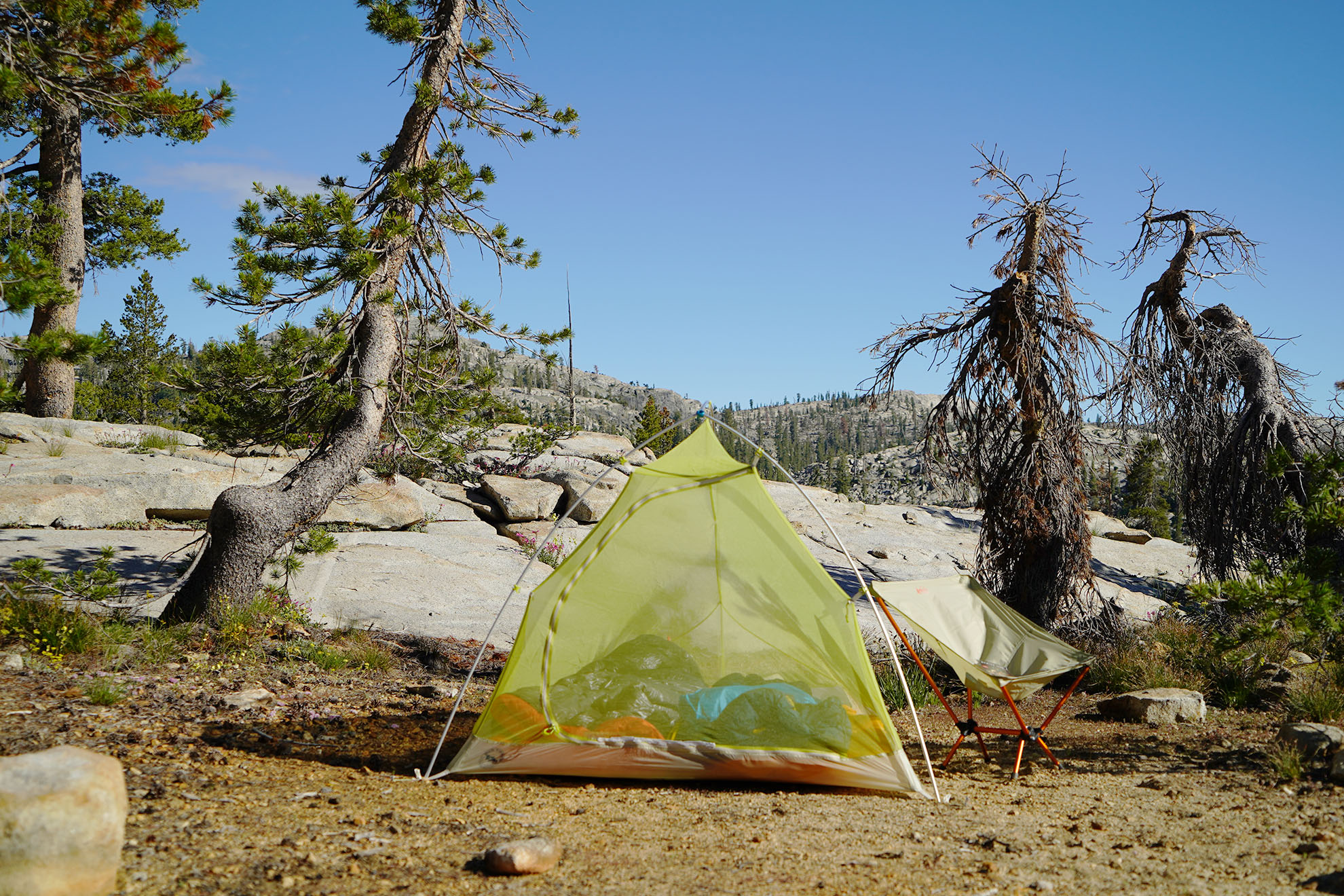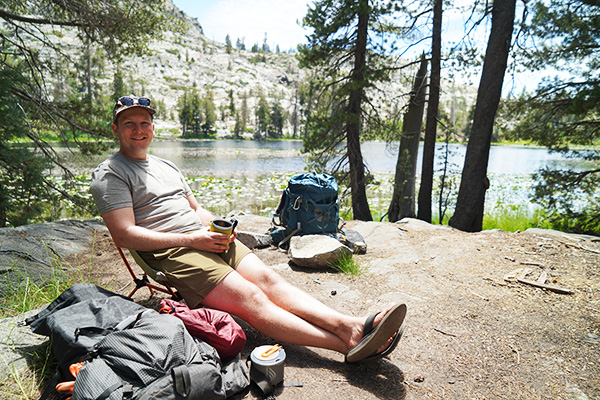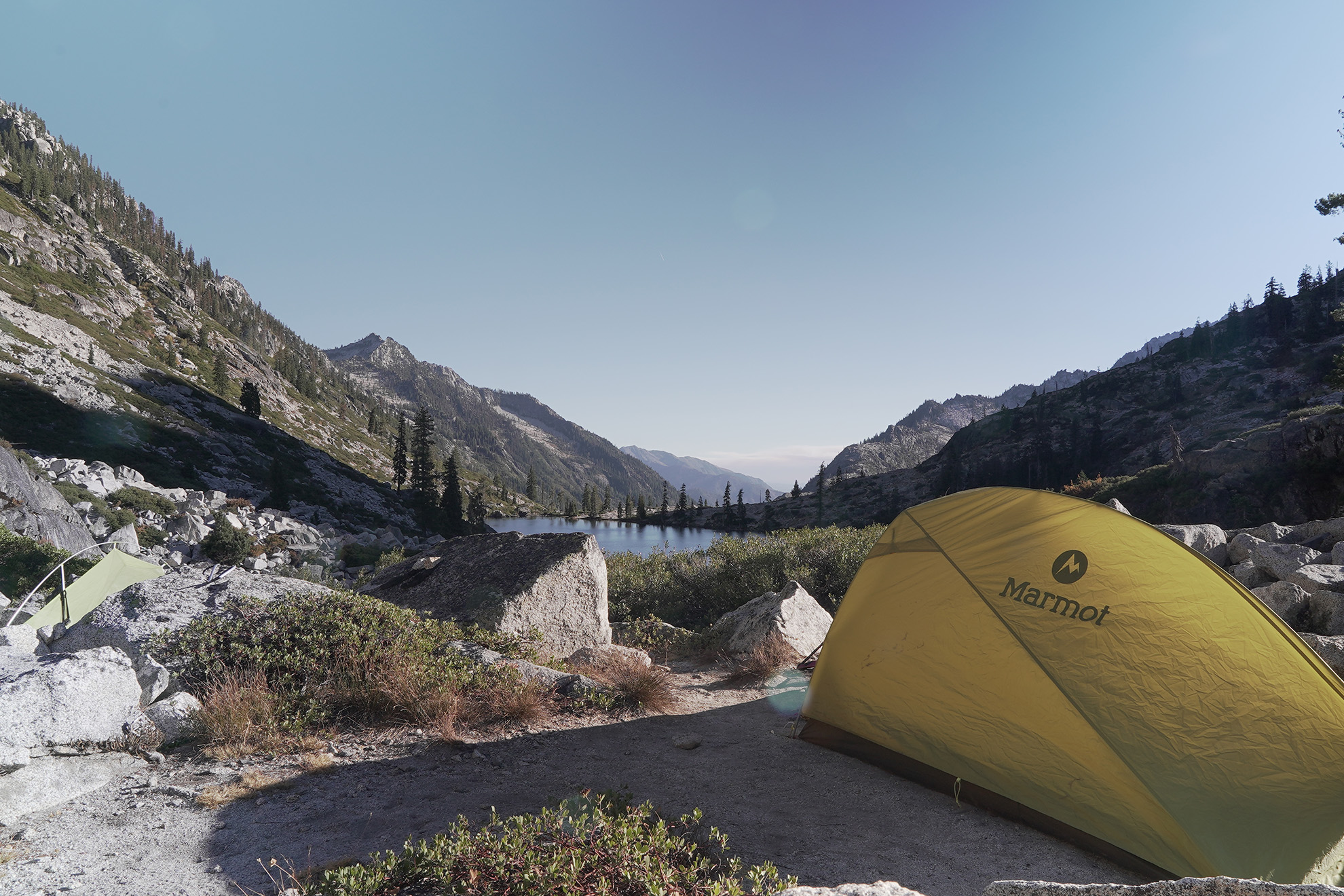Are you an avid adventurer, constantly seeking new experiences in the great outdoors? If so, then you know the importance of having the right gear by your side. A solid backpacking tent is vital to a safe and successful backpacking trip. Whether you’re embarking on a solo expedition or planning a group camping trip, finding the best backpacking tent is crucial for a comfortable and memorable outdoor experience.
But with so many options available, how do you know which one is right for you?
If you just want the answers, you can scroll to the bottom of this article for our roundup of the best backpacking tents OR you can read our dedicated article comparing our top 5 choices here.
If you want to learn what to look for while picking a backpacking tent continue reading as we’ll explain everything you need to know to find the perfect backpacking tent for your next outing.
In this comprehensive guide, we will take you through the key factors to consider when choosing a tent, the different types of tents available, and offer tips to help you make an informed decision.
Factors to Consider When Choosing a Backpacking Tent
When it comes to choosing a backpacking tent, there are several factors that you should consider to ensure that you make the right choice. These factors will not only affect the comfort and convenience of your camping experience but also impact the overall performance and durability of the tent. Let’s take a closer look at some of the key factors to consider when selecting a backpacking tent.
Tent Size and Capacity
The size of the tent is one of the most important considerations. You’ll need to determine how many people will be using the tent and how much space you’ll need for your gear. Keep in mind that backpacking tents are typically designed to accommodate a specific number of people, so make sure to choose one that suits your needs.
Tent interiors are usually pretty “cozy” and there is no industry standard regarding tent volume/floor space per person meaning one brand 2-person tent may not be the same as another.
Weight
Since you’ll be carrying your tent on your back, the weight of the tent is a crucial factor to consider. Look for lightweight options that won’t add unnecessary strain to your shoulders and back. However, be mindful not to compromise on durability and quality in favor of lighter weight.
There is a lot of confusion surrounding tent weight but the two most common weights you’ll hear used to describe a tent are: minimum trail weight and packed trail weight.
Minimum Trail Weight
This is the weight of the tent body, rainfly, and poles. Basically, the bare minimum your tent can weigh. This weight does not include other tent items you may want to bring such as a footprint or stakes.
Packaged Weight
This is the weight of everything your tent came with. This includes the body, rainfly, poles, stuff sack, stakes, etc. Your weight will most likely be somewhere between this weight and the minimum trail weight.
For most fair-weather backpacking trips, I carry along my Big Agnes Fly Creek HV2 Platinum tent. I often opt out of bringing the body and use what is called a fast-pitch setup. This requires my footprint, the rainfly, poles, and stakes. I also leave behind the stuff sack the tent goes in. This isn’t for weight savings but helps with my packaged dimensions. I find it easier to pack around the rainfly and footprint than a tightly compressed stuff sack.
Seasonality
Consider the seasons and weather conditions in which you plan to use the tent. Different tents are designed for different seasons, ranging from lightweight summer tents to heavy-duty winter tents. Make sure to choose a tent that is appropriate for the weather conditions you expect to encounter. For most people, the sweet spot is actually owning two tents, a 3 season for Summer, Fall, and Spring and a heavier-duty 4 season double-walled tent for winter expeditions.
3 – Season Backpacking Tents
These tents are perfect for keeping weight down while providing conditions you’ll most likely encounter during Spring, Summer, and fall. They can handle some light snow and rain but are not designed for sustained exposure to storms and heavy winds.
4-season Backpacking Tents
These are winter tents designed to withstand harsh winds and heavy snow loads. They generally have less ventilation and feel stuffy in more mild weather. They use heavier fabric and poles to achieve a stronger structure.
Ease of Setup
Look for a tent that is easy to set up and take down. When you’re out in the wild, you don’t want to spend hours struggling with complicated instructions or dealing with a tent that is difficult to assemble. Look for tents with intuitive designs and user-friendly features that make the setup process quick and hassle-free.
Durability
Your backpacking tent needs to withstand the rigors of outdoor adventures. Look for tents made from durable materials that can withstand wind, rain, and other harsh conditions. Pay attention to the quality of the tent’s poles, zippers, and seams, as these are areas that are prone to wear and tear.
Keeping all of this in mind, you should be able to narrow down your choices.
Different Types of Backpacking Tents
When it comes to backpacking tents, there are several different types available, each with its own set of advantages and disadvantages. Understanding the different types of tents will help you make an informed decision and choose the one that best fits your needs. Let’s explore some of the most common types of backpacking tents.
Freestanding Tents
Freestanding tents are the most popular type of backpacking tents. They are easy to set up and don’t require any additional support, such as stakes or guy lines, to remain upright. Freestanding tents are versatile and can be pitched on various terrains, making them a great choice for most backpackers.
Tunnel Tents
Tunnel tents are lightweight and offer a spacious interior. They are designed with a series of arched poles that create a tunnel-like structure. Tunnel tents are known for their stability in windy conditions and are a popular choice for backpackers who prioritize weight savings without compromising on space.
Dome Tents
Dome tents are characterized by their dome-like shape, which provides excellent stability and headroom. They are easy to set up and offer good protection against wind and rain. Dome tents are suitable for a wide range of weather conditions and are a popular choice for backpackers who value comfort and livability.
Tarps and Tarp Shelters
Tarps and tarp shelters are minimalist options for backpackers who prioritize lightweight and versatile gear. They are essentially large pieces of waterproof fabric that can be set up in various configurations using trekking poles or trees as support. Tarps and tarp shelters offer minimal protection from the elements but provide ample ventilation and allow for greater flexibility in campsite selection.
By understanding the different types of backpacking tents and their unique features, you can choose the one that best suits your needs and preferences. Consider factors such as weight, livability, and ease of setup when making your decision.
Popular Backpacking Tent Brands
With a plethora of backpacking tent brands on the market, it can be overwhelming to choose the right one for your outdoor adventures. To help you make an informed decision, let’s compare some of the most popular backpacking tent brands and their offerings.
Big Agnes is known for its high-quality backpacking tents that strike a balance between weight, durability, and comfort. Their tents are designed with innovative features such as DAC poles, which provide strength and stability, and lightweight materials that make them ideal for backpacking trips.
MSR (Mountain Safety Research) is a well-established brand in the outdoor industry, known for its reliable and durable backpacking tents. MSR tents are designed to withstand harsh weather conditions and offer excellent protection from the elements. They also prioritize lightweight designs without compromising on strength and durability.
Nemo Equipment is renowned for its innovative and feature-rich backpacking tents. Their tents are designed with unique features such as integrated footprints, removable vestibules, and gear storage pockets, providing convenience and versatility for backpackers. Nemo Equipment also offers a wide range of tent sizes and styles to cater to different needs.
REI Co-op offers a range of backpacking tents that cater to different budgets and preferences. Their tents are known for their solid construction, ease of setup, and reliable performance in various weather conditions. REI Co-op also offers a generous warranty and excellent customer service, making them a popular choice among backpackers.
Zpack tents are renowned for their lightweight design, making them a top choice for backpackers seeking to minimize pack weight. These tents utilize innovative materials like Dyneema Composite Fabric, striking a perfect balance between durability and weight savings. Zpack offers a diverse range of tent options, from solo to family sizes, all engineered with meticulous attention to detail. Their tents excel in providing ample interior space, excellent weather resistance, and hassle-free setup. With a solid reputation for quality craftsmanship, Zpack is a trusted brand among outdoor enthusiasts, ensuring unforgettable adventures with their reliable and feature-packed tents.
Durston tents are synonymous with durability and reliability, making them a go-to choice for outdoor enthusiasts. Constructed with high-quality materials, these tents withstand the harshest conditions, providing exceptional protection and peace of mind. Durston offers a diverse lineup of tents, ranging from lightweight backpacking options to spacious family models, ensuring there’s a perfect fit for every adventure. With thoughtful design features, such as intuitive setup systems and ample ventilation, Durston tents prioritize comfort and convenience. Trusted by seasoned adventurers, Durston is a brand that delivers exceptional performance, allowing you to embrace the great outdoors with confidence.
Hyperlite Mountain Gear (HMG) tents and shelters are revered for their ultralight design and uncompromising quality. Crafted from cutting-edge materials like Dyneema Composite Fabric, HMG products offer exceptional strength-to-weight ratios, ensuring durability without the added bulk. Whether it’s a solo trek or a group expedition, HMG provides a range of tents and shelters to suit different needs. Their innovative designs prioritize space efficiency and weather protection, while also offering easy setup and packability. With a commitment to sustainability and attention to detail, HMG continues to earn the trust of outdoor adventurers seeking reliable, lightweight, and high-performance gear.
Choosing the Right Size and Weight for Your Backpacking Tent
When it comes to backpacking tents size and weight as we mentioned earlier are crucial factors. The size of your tent will determine how comfortable and spacious your sleeping quarters will be, while the weight will impact how easy it is to carry during your outdoor adventures.
Let’s explore some tips for choosing the right size and weight for your backpacking tent.
Consider the number of occupants
Determine how many people will be using the tent. Most backpacking tents are designed to accommodate one to four people, so choose a size that suits your needs. Keep in mind that a larger tent will provide more space but will also be heavier to carry.
Evaluate the interior space
Consider the dimensions and layout of the tent’s interior. Look for tents with sufficient headroom and floor space to ensure that you can comfortably sleep and move around. If you prefer more room or plan to store gear inside the tent, opt for a slightly larger size.
Factor in gear storage
Take into account the amount of gear you’ll be carrying and whether you’ll need additional space inside the tent for storage. Some tents offer vestibules or gear lofts that provide extra storage space, which can be beneficial if you have bulky or wet gear that you don’t want to keep inside the sleeping area.
How much does it weigh?
Consider the weight of the tent, especially if you’ll be carrying it on long hiking trips. Lightweight tents are typically preferred by backpackers, as they minimize the strain on your back and shoulders. However, be cautious not to sacrifice too much comfort or durability for the sake of lighter weight.
By considering these factors and evaluating your specific needs, you can choose a backpacking tent that strikes the right balance between size and weight, ensuring a comfortable and manageable camping experience.
Features to Look for in a Backpacking Tent
When choosing a backpacking tent, it’s essential to consider the features that will enhance your camping experience and make your adventures more enjoyable. While the specific features you prioritize will depend on your individual needs and preferences, here are some key features to look for in a backpacking tent.
Weather resistance
Look for a tent that offers excellent weather resistance. This includes features such as a waterproof rainfly, bathtub-style floor construction, and sealed seams to keep water out. A tent with good ventilation is also crucial to prevent condensation buildup inside the tent.
Ventilation
Proper ventilation is essential for a comfortable and condensation-free camping experience. Look for tents with mesh panels, windows, or vents that allow for airflow while keeping bugs out. This is particularly important in humid or warm climates.
Sturdy construction
Pay attention to the tent’s construction and materials. Look for durable fabrics, robust poles, and sturdy zippers that can withstand the rigors of outdoor use. Reinforced stitching and quality craftsmanship are indicators of a well-built tent.
Ease of setup
Choose a tent that is easy to set up and take down. Features such as color-coded poles, intuitive designs, and clear instructions can make the setup process quick and hassle-free. Look for tents with clip-on or hubbed pole systems for added convenience.
Livability
Consider the livability features of the tent, such as interior pockets, gear lofts, and multiple doors. These features can enhance your camping experience by providing convenient storage options and easy access in and out of the tent.
Packability
If you’ll be carrying your tent for long distances, consider its packability. Look for tents that compress down to a small size and fit well into your backpack. Tents with compact stuff sacks or compression straps are ideal for backpackers.
By prioritizing these features and assessing your specific needs, you can find a backpacking tent that offers the functionality and convenience you desire, ensuring a pleasant camping experience.
Tips for Setting Up and Maintaining Your Backpacking Tent
Proper setup and maintenance of your backpacking tent are crucial for its longevity and performance. Follow these tips to ensure that your tent remains in excellent condition and provides reliable shelter during your outdoor adventures.
Practice setting up your tent
Before heading out on your camping trip, practice setting up your tent in your backyard or a local park. Familiarize yourself with the tent’s components, such as the poles, rain fly, and stakes, and learn the correct assembly process. This will save you time and frustration when you’re out in the field.
Choose a suitable campsite
Select a suitable campsite that offers a flat and level surface for pitching your tent. Clear the area of any sharp objects, rocks, or debris that could puncture the tent floor. Avoid low-lying areas that may collect water during rainstorms.
Follow the manufacturer’s instructions
Always refer to the manufacturer’s instructions when setting up and taking down your tent. Each tent is designed differently, so following the specific guidelines will ensure proper setup and prevent any damage to the tent.
Use a groundsheet or footprint
Consider using a groundsheet or footprint underneath your tent to provide an extra layer of protection against abrasion and moisture. This can help prolong the lifespan of your tent’s floor and prevent damage from sharp objects or wet ground.
Secure your tent properly
Ensure that your tent is securely staked and guyed out to withstand wind and other weather conditions. Properly tension the guy lines to provide stability and prevent flapping in the wind. This will help maintain the integrity of your tent and keep it in place during gusty conditions.
Clean and dry your tent after each use
After your camping trip, make sure to clean and dry your tent thoroughly before packing it away. Remove any dirt, debris, or stains using mild soap and a soft brush. Allow the tent to air dry completely to prevent mold and mildew growth.
By following these tips and taking proper care of your backpacking tent, you can maximize its lifespan and ensure that it continues to provide reliable shelter for your outdoor adventures.
